
Moving a unit pipe train train from one track to another. this view is looking from the yard engine at First Street and the East Yard CTC switch. The green covered hopper is a buffer car to prevent the pipes from spearing through the cab of the road loco should there be a collision. Ribbon-rail trains also use such buffer cars. 3/30/2004

The newest BNSF paint scheme arrives in Sheridan. The loco is also the newest model, one of the 12 cylinder GEVO C44s. Officially an ES44DC. 6/20/2005

Another one. This time it is a repainted SD40 that arrived on the Georgetown ballast train seen behind it. 7/28/2005
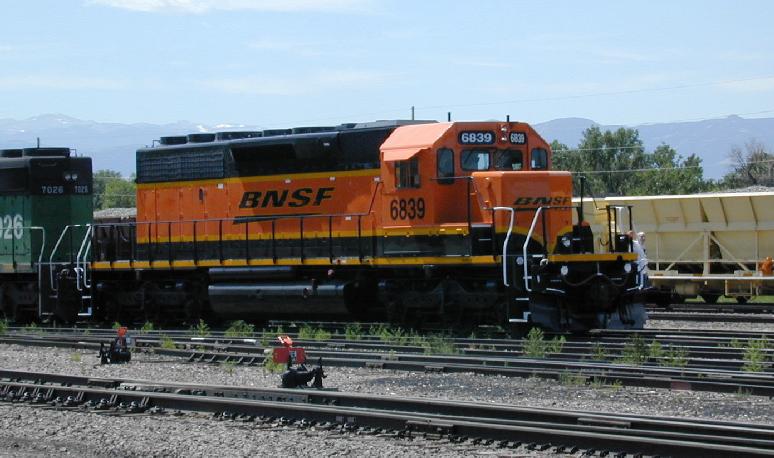
Before I got on the switch engine nearly two years ago I saw this true slug that was passing through Laurel yard on 10/9/2003. No it is not mated to the SD70MAC. Its mother is the SD39 BNSF 6210 coupled on the left. A slug is a unit that has traction motors but no diesel engine. It gets its electric power from its "mother". They are used in heavy switching service. This one appears to be built from a U30C?
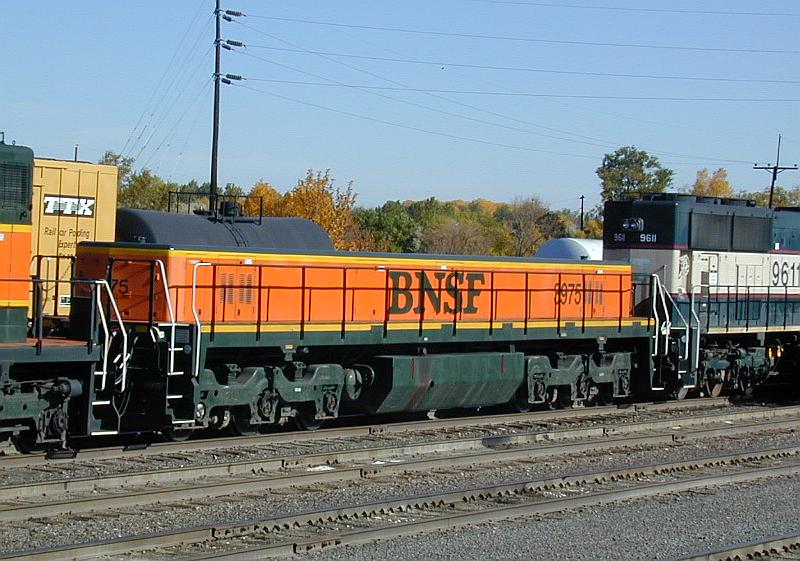
A business train enters Sheridan Yard and passes my switch engine on 6/10/2005 on its way to the depot.
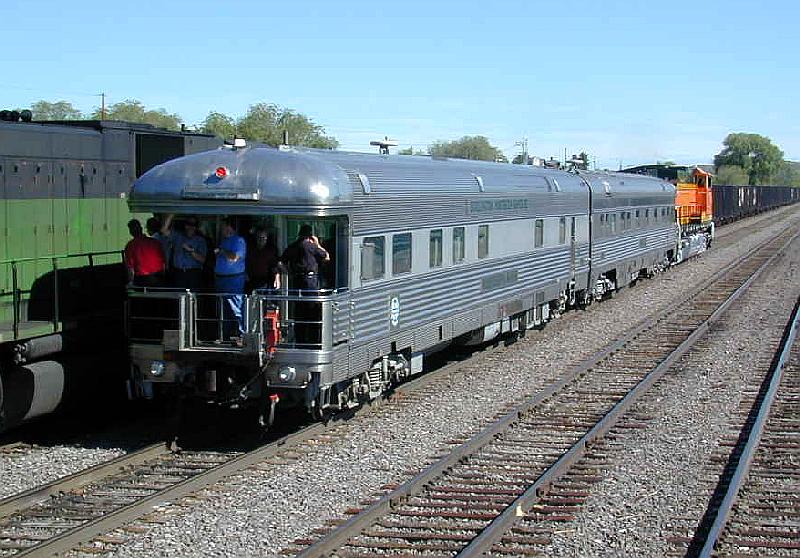
One month later finds another business train parked in the dock track at Sheridan. The gallery/dome car is being serviced by the tank truck before resuming its journey. 7/8/2005
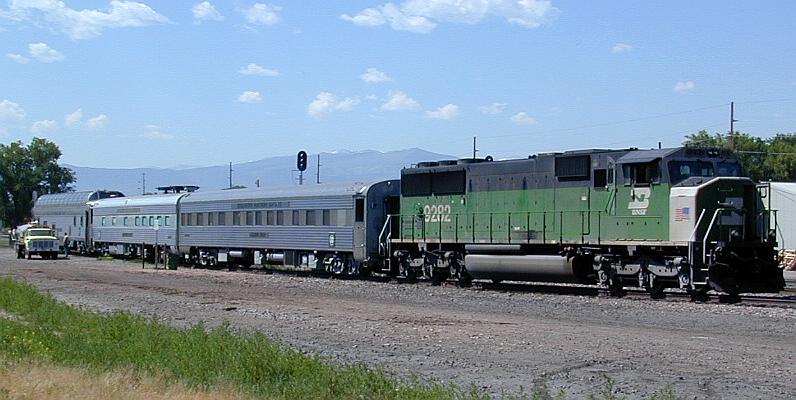
On 6/29/2005 we spotted an air dump car on the RIP Track for some welding repair on its underside.

The carmen put it into its dump position then blocked it there with wooden posts between the trucks and the body. Most air dump cars are air operated and the lift cylinders are much larger than these. Air operation has the drawback that dumping cannot be easily controlled. Air pressure is let into the cylinders to start lifting the carbody. But as the body tilts it requires less pressure to lift it so the load is dumped all at once and cannot be stopped. This is dangerous if the load happens to be frozen to the car. It usually flips the car onto its side when the load does not slide out.So the newer cars like this one have hydraulic lift cylinders instead of air cylinders. The hydraulic lift can be precisely controlled to dump slowly or dump only part of the load. What I find amazing is how they get the hydraulic pressure to run these outfits. Note the two opposing "air brake" cylinders at the frame near the center of the car. That is just what these are... air brake cylinders. Except they have nothing to do with air braking. Their pistons are connected to each other and to a lever. That lever pushes on a hydraulic pump located behind the air cylinders. So in operation those two air cylinders work back and forth as an opposed piston air engine. Psst psst psst psst psst as they pump the hydraulic fluid into the hydraulic lift cylinders. Pretty amazing to watch it work.
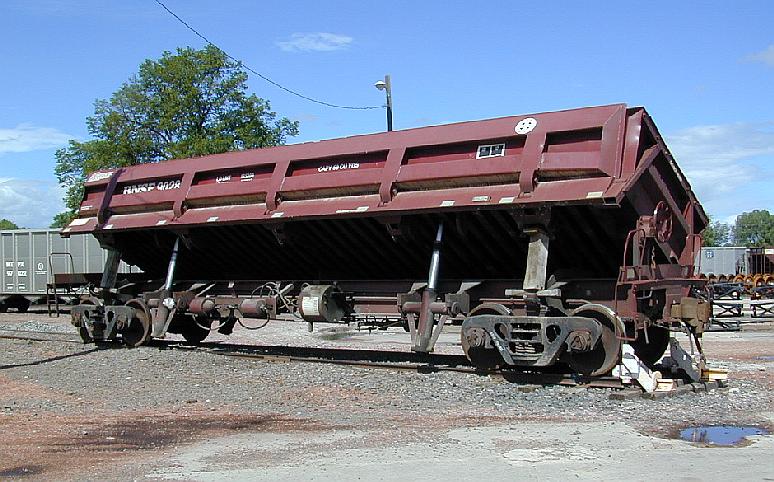
July 28, 2005 finds the Georgetown special ballast train parked in Sheridan Yard while its power is picking up a string of regular ballast hoppers from another track to take along. The Georgetown train has two ballast bins (hoppers) mounted to each "car" section. The cars are articulated having only one truck between each section. A conveyor belt runs under the bins for the entire length of the train. The ballast is allowed to drop out of the bottom of the bins onto the conveyor belt which carries it up to the front of the train. At the front there is a moveable conveyor that can be rotated to dump the ballast anywhere with in a 180 degree arc. Note the "snow plow" on the front to plow any stray ballast.
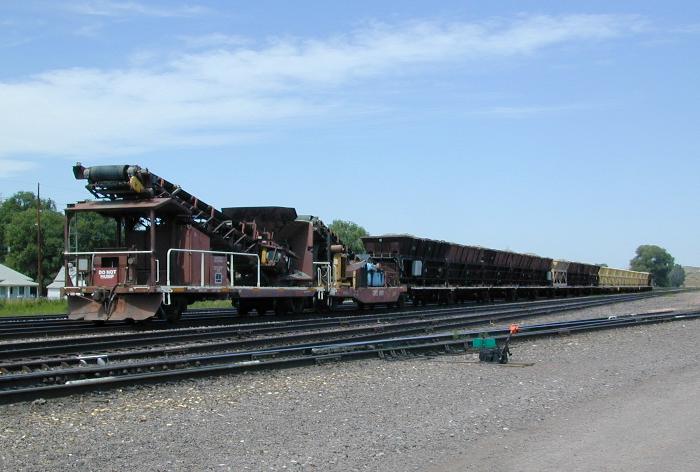
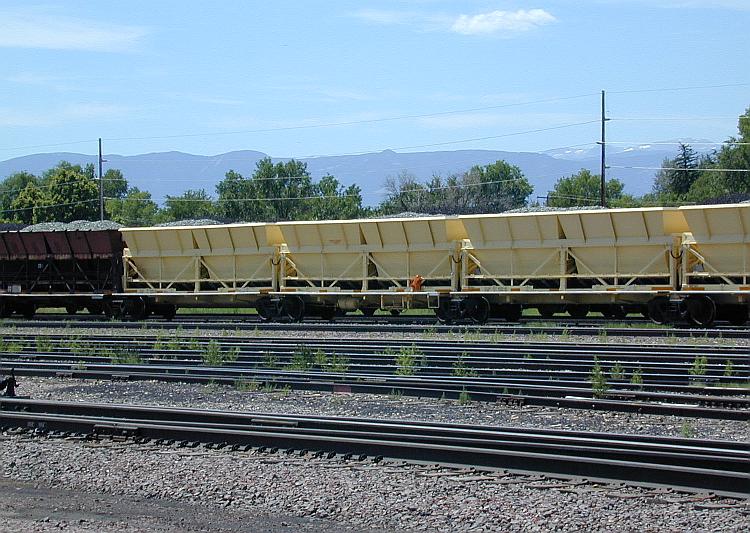
On July 1, 2005 a ribbon-rail train leaves Sheridan Yard. Behind it is the power of an empty coal train with a TFM loco. The train behind that one has a Boeing car behind its power that can be seen over top of the TFM. Photos taken from my switch engine.
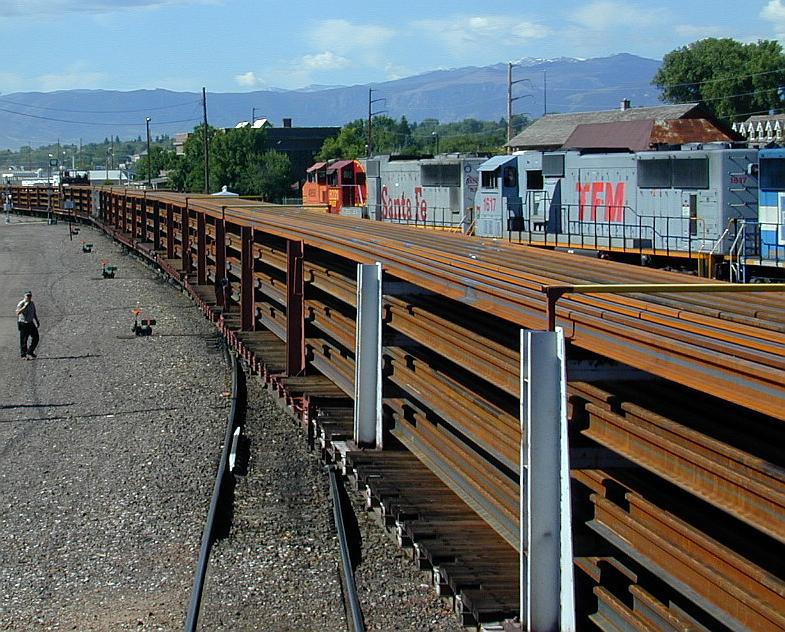
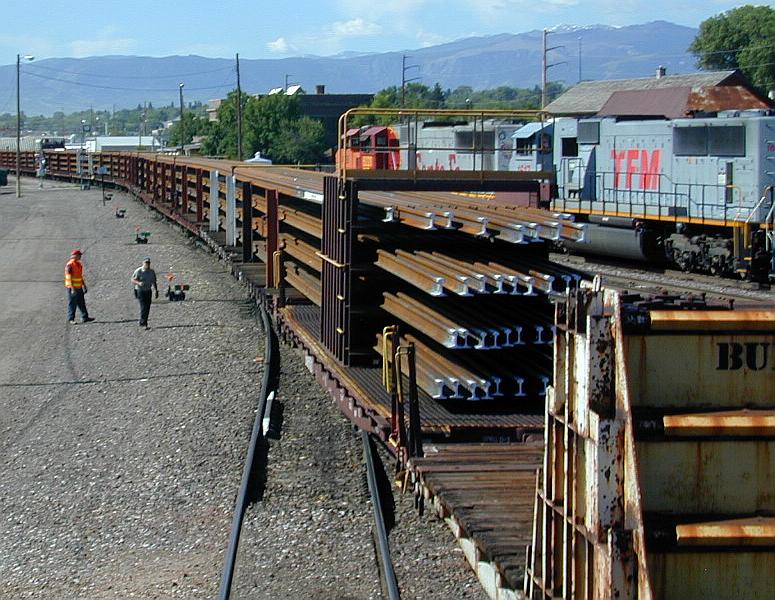
On May 5, 2005 I had just returned to the roundhouse office after lunch. I was getting something from my locker when there was a loud crack! followed immediately by crackling electricity then the lights went out. A writhing rippling noise came from within the cieling over my head as I instinctively ducked. Then silence.It was raining lightly and I thought maybe lightning had struck the building or nearby. After cautiously poking my head out of the doorway I saw the culprit.
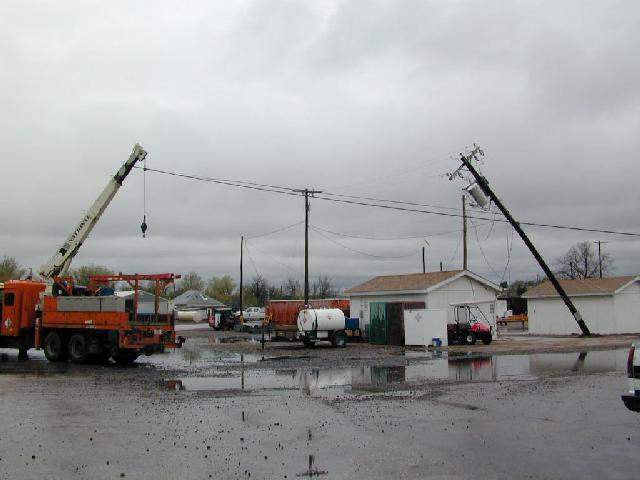
The driver of the MOW truck above had attempted to drive off forgetting that the boom was up. The boom snagged an electrical wire. Before he got stopped he had pulled over or snapped off 8 power poles in the parking lot and surrounding area. Some of them fell on parked automobiles and other MOW trucks. It was not a pretty sight. Luckily none were occupied. The writhing rippling noise I had heard over my head was the sound of the computer network cables being pulled out of the attic. Below, my switch engine sits behind a smashed MOW truck.
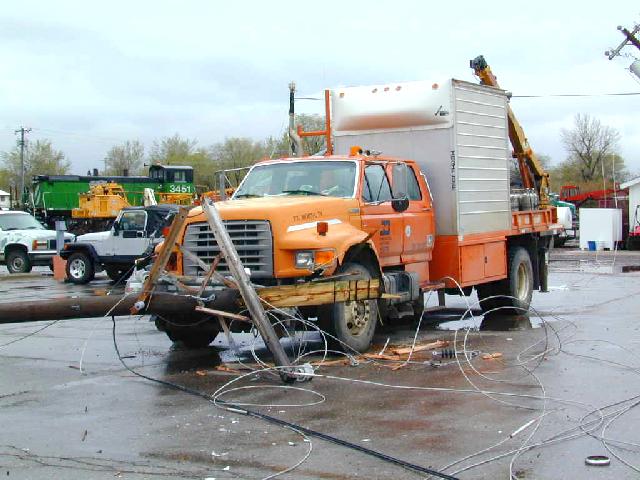
Return to Tales index My Home Page E-Mail me Created 07-27-2005
Updated 12-09-2006